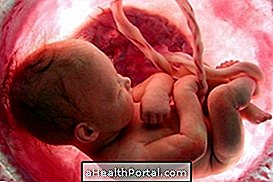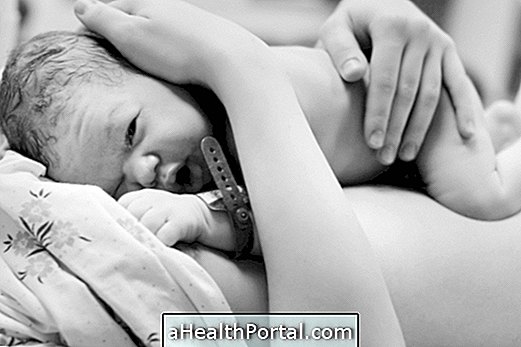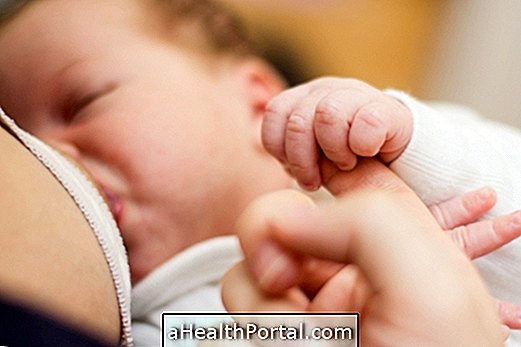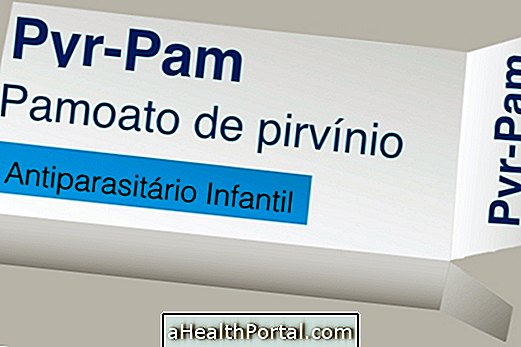The gestational sac is the first structure formed in early pregnancy that surrounds and shelters the baby and is responsible for forming the placenta and amniotic sac for the baby to grow in a healthy way, being present until approximately the 12th week of pregnancy.
The gestational sac can be visualized by transvaginal ultrasound around the 4th week of pregnancy and is located in the central part of the uterus, measuring 2 to 3 millimeters in diameter, being a good parameter for confirming pregnancy. However, at this stage it is not yet possible to see the baby, which only appears inside the gestational sac after 4.5 to 5 weeks of gestation. For this reason, doctors generally prefer to wait until the 8th week to request an ultrasound to have a safer assessment of how the pregnancy is developing.
The evaluation of the gestational sac is a good parameter to check if the pregnancy is progressing as it should. The parameters evaluated by the doctor are the implantation, the size, the shape and the content of the gestational sac. Check other tests to evaluate the evolution of the pregnancy.

Gestational bag size table
The gestational sac increases in size with the evolution of pregnancy. During the ultrasound, the doctor compares the results of this exam with the following table:
Legend: mm = millimeters.
The reference values in the gestational bag size table allow the doctor to identify problems and anomalies of the gestational bag in advance.
Most common problems with the gestational sac
The healthy gestational sac has regular, symmetrical contours and good implantation. When there are irregularities or low implantation, the chances of pregnancy not progressing are great.
The most common problems include:
Empty gestational bag
After the 6th week of pregnancy, if the fetus is not seen by ultrasound, it means that the gestational sac is empty and therefore the embryo has not developed after fertilization. This type of pregnancy is also called anembryonic pregnancy or blind egg. Learn more about anembryonic pregnancy and why it happens.
The most common causes of the fetus not developing are abnormal cell division and poor quality of the sperm or egg. Generally, the doctor requests to repeat the ultrasound around the 8th week to confirm anembryonic pregnancy. If confirmed, the doctor may choose to wait a few days for spontaneous abortion or make a curettage, in which case hospitalization is required.
Displacement of the gestational sac
The displacement of the gestational sac can occur due to the appearance of a hematoma in the gestational sac, due to physical effort, fall or hormonal changes, such as dysregulation of progesterone, high blood pressure, use of alcohol and drugs.
The signs of displacement are mild or severe colic and bleeding brown or bright red. Generally, when the displacement is greater than 50%, the chances of miscarriage are high. There is no effective way to prevent displacement, but when it does, the doctor will recommend medications and absolute rest for at least 15 days. In the most severe cases, hospitalization is necessary.
When to go to the doctor
It is important to go to the doctor if symptoms of severe colic or bleeding appear, in which case one should immediately seek maternity or emergency care and contact the doctor who monitors the pregnancy. The diagnosis of problems in the gestational sac is only made by the doctor by ultrasound, so it is important to start prenatal care as soon as you know about the pregnancy.
Was this information helpful?
Yes No
Your opinion is important! Write here how we can improve our text:
Any questions? Click here to be answered.
Email in which you want to receive a reply:
Check the confirmation email we sent you.
Your name:
Reason for visit:
--- Choose your reason --- DiseaseLive betterHelp another personGain knowledge
Are you a health professional?
NoMedicalPharmaceuticalsNurseNutritionistBiomedicalPhysiotherapistBeauticianOther
Bibliography
- NAPOLITANO, Rafaelle; PAPAGEORGHIOU, Aris T. Twining’s Textbook of Fetal Abnormalities. Chapter 1 - First-Trimester Detection of Fetal Anomalies. 3.ed. Elsevier, 2015. Chapter 1.
- DEWALD, Olga; HOFFMAN, Jennifer T. Gestational Sac Evaluation. StatPearls. 2020
- SUGUNA, B .; SUKANYA, K .. Yolk sac size & shape as predictors of first trimester pregnancy outcome: A prospective observational study. Journal of Gynecology Obstetrics and Human Reproduction. 48. 3; 159-164, 2019

























